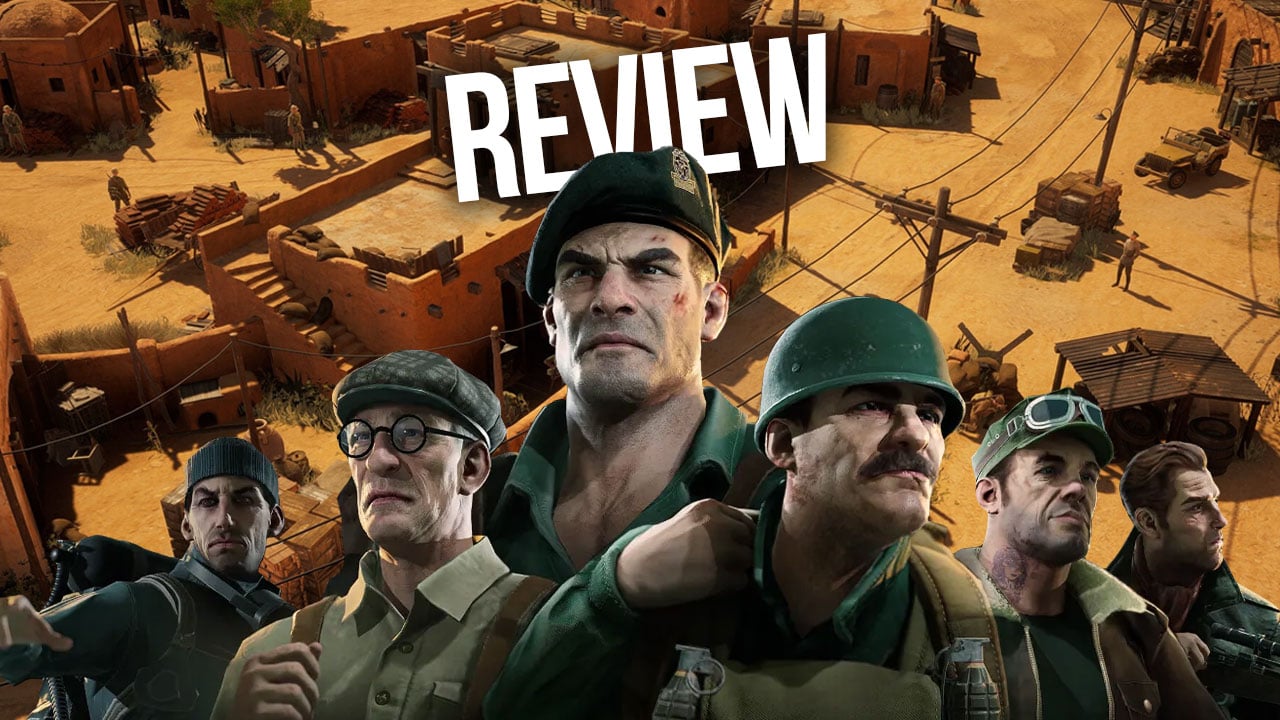
Over time, it seems like more and more developers are drawn to popular TV shows with a cult following. Sometimes, these series can even stir up emotions so strongly that they remind us of cherished memories from our youth.
Developers at Claymore Game Studios, having crafted the latest addition to the series, aimed to stir the feelings of those who fondly remember the Commandos series from their childhood. With Commandos: Origins, we find ourselves plunged back into the tumultuous events of World War II, and as we progress through each mission, we help construct an esteemed and beloved team of soldiers once more. Is this a triumphant return, or have the creators merely attempted to cash in on past successes?
There were six of them against the army
In line with its title, “Commandos: Origins” narrates the origins of a unique team tasked with seemingly insurmountable objectives. Even during the training phase, players can manage two members – a sapper and arguably the most identifiable one, the green beret. As subsequent missions are successfully accomplished, characters like a sniper, driver, diver, and spy will join the squad.
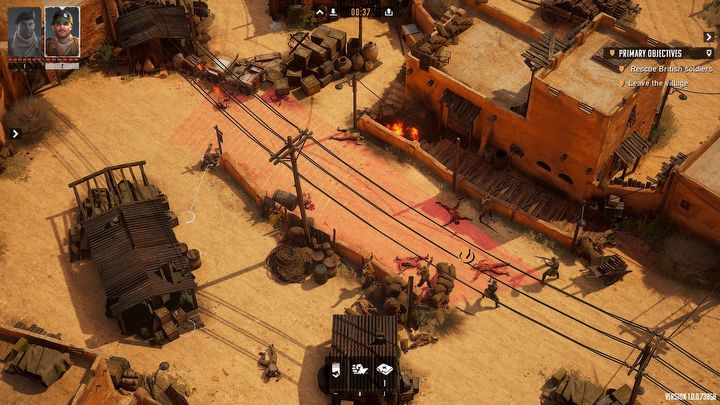
It’s obvious that each one possesses distinctive skills. For example, a green beret represents a formidable strongman, not only capable of transporting heavy weights but also delivering a potent strike to an adversary, making them instantly unconscious. To accomplish the task successfully, however, you need to leverage the talents of all the characters. I must confess, the thrill of combining their skills was quite exhilarating.
In every mission, it’s crucial to keep in mind that Commandos: Origins is a stealth-based game, so getting into open fights generally leads to defeat, or in other words, the end of the game. Therefore, it’s essential to strategize your actions carefully at each stage and make full use of your commandos.
When you thought something was impossible, they show up
In the past, games from this series were famously challenging and beating them felt incredibly rewarding. However, in Commandos: Origins, that sense of accomplishment seldom emerged.
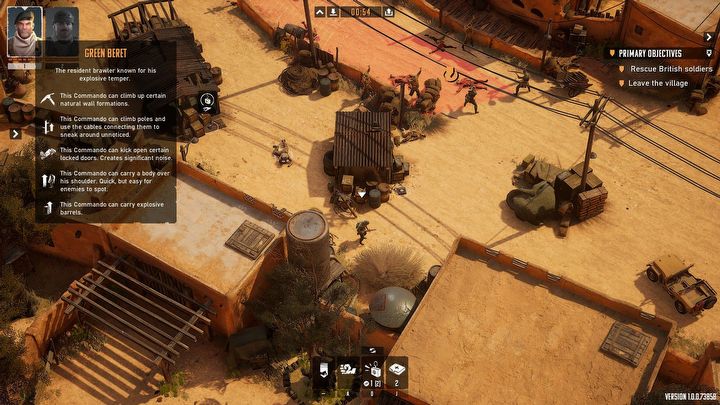
Let me clarify, the tasks are quite captivating and engaging. I would become so immersed in my team’s actions that I would forget to save the game. Regrettably, this oversight meant having to revert back to a save from 10-15 minutes prior. Typically, it wasn’t the opponents’ challenges that caused this inconvenience, but rather the hurdles deliberately placed by the developers along my path.
When engaged in “Commandos: Origins”, it felt like the developers deliberately intended to frustrate me, given the abundance of puzzling decisions and flaws that were quite unsettling. The sheer quantity of odd workarounds and oversights was alarming. I find it hard to overlook the missed opportunities to enhance the overall gaming experience.
What I found myself yearning for the most was the ability to queue my soldiers’ actions. While I recognize that it might not align perfectly with an active gameplay style, and adding it could potentially alter the core concept of the series, it’s crucial to keep in mind that enhancing the game goes beyond just upgrading graphics and modifying interfaces. I suspect that omitting certain features may cause players to lose interest in Commandos: Origins.
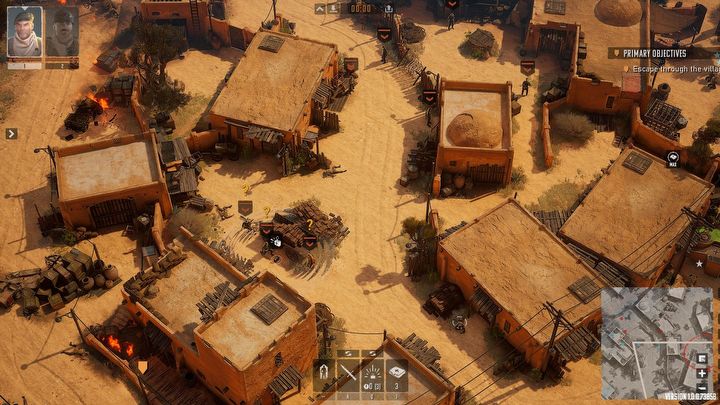
The depicted incidents on the screen can be challenging to follow due to the peculiarities inherent in the stages themselves. On multiple occasions, I’ve observed characters struggle with ascending ladders, and at times, they seem to get trapped on seemingly obstacle-free paths.
Not all maps are equal
For 27 and 24 years now, it’s been since the original and sequel games of the Commandos series were launched this year. Notably, the meticulously crafted stages in both Commandos: Behind Enemy Lines and Commandos: Men of Courage have left a lasting impression on me. Coincidentally, I just managed to secure a copy of Commandos: Origins and found myself revisiting iconic missions like D-Day Kick Off, Castle Colditz, and Target: Burma, which still resonate vividly in my memory despite the passage of time since I first played the initial installments of this legendary series.
As a devoted fan, I regretfully find myself unable to echo the same sentiments about the stages in Commandos: Origins that others might have. I recently completed the game, but I can’t help but feel underwhelmed by it. Unfortunately, none of the stages left an indelible impression on me, as they all seemed rather ordinary and lacked any distinguishing features.
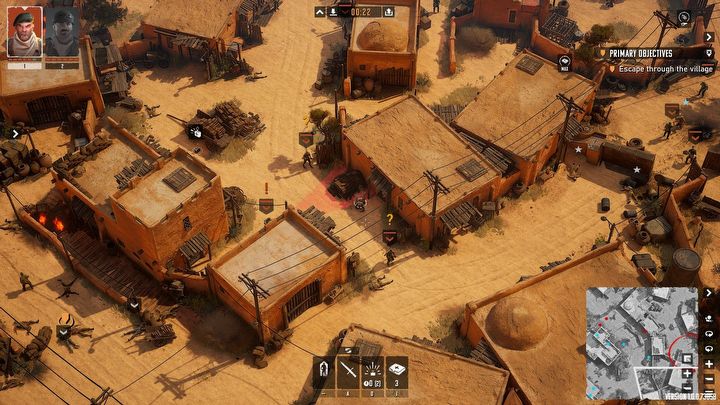
As a devoted fan, I can’t help but reminisce about the freedom of choice offered in the classic versions of the Commandos series. These games allowed stages to be completed in various ways, fostering replayability. Now, as I delve into Commandos: Origins, I wonder if it maintains this non-linear approach that made the original games so captivating and compelling for multiple playthroughs.
As a gaming enthusiast, let me express my dismay over some titles that, unfortunately, seem quite linear. Playing them felt more like a monotonous march down a hallway than an exhilarating adventure. It seemed as though all I had to do was advance, encounter adversaries who popped up along the way, and that was about it. Completing each stage left me feeling somewhat unfulfilled. The thrill of overcoming challenges and the emotional connections that come with victory were conspicuously absent in these games.
- gameplay can be fun;
- balanced difficulty level;
- very good stealth elements;
- return of the old faces.
CONS:
- bad graphic;
- frequent animation clipping;
- boring maps;
- poor optimization;
Quick save is a commando’s best friend
In the last game I played, I seldomly remember utilizing the quick save key to such an extent. Contrary to what some might think based on the game’s challenging nature, it wasn’t because the difficulty level was too high. Missions were tough, requiring both effort and nerves, but most of my characters’ untimely demise could be attributed more to the game’s technical issues rather than my own skill.
During the game, I experienced various issues such as difficulties in climbing ladders, getting stuck in tight spaces, and poor navigation or failed execution of given commands. These were some of the bugs I encountered. However, I’m aware that the version of the game I played was before the first set of updates, which I hope will address these problems.
The frames are dropping, welcome to 2025
In addition to my concerns about the game’s technical performance, it seems that in the year 2025, we’ve advanced through multiple generations of graphics cards, each promising more frame rates due to new advancements. However, I can’t help but feel that Deep Learning Super Sampling (DLSS) and FidelityFX Super Resolution (FSR) are significant issues plaguing the current video game market.
Based on the developers’ statements, older processors and graphics cards should be capable of running the game smoothly. Regrettably, this is not my experience. My desktop computer, while not a powerhouse, seems to struggle with it. Given that the game is an isometric strategy with relatively static action, I would have thought it could handle a Ryzen 5 5500, RTX 2060, and 32 GB of RAM with ease. However, “Commandos: Origins” has consistently shown me how incorrect one can be about certain matters. There were only a handful of instances where the game didn’t stutter or drop frames. Issues such as frame rate drops, animation hiccups, and screen freezing were all present.
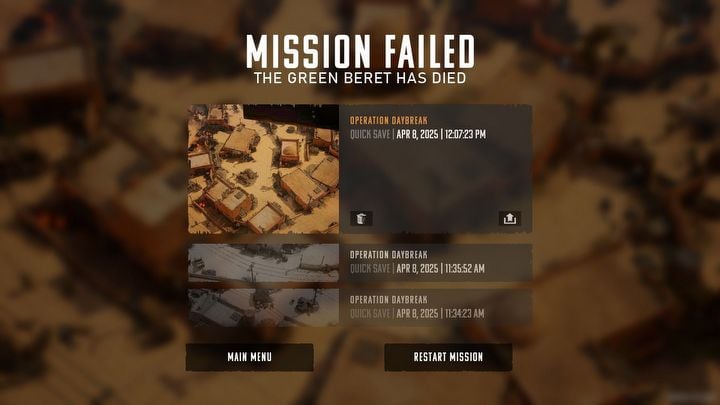
After its release, I truly believe that “Commandos: Origins” should undergo proper optimization. While it may not boast photorealistic graphics, it seems to encounter more technical hiccups than numerous titles with visually stunning appearances. The team at Claymore Game Studios has my utmost respect, but I fervently hope that post-launch, these initial glitches will be transformed into strengths.
Is it really that bad? Not necessarily
Generally speaking, I’ve shared quite a few criticisms about the game Commandos: Origins. It might appear to you as though
In “Commandos: Origins,” it excels at living up to its identity as a stealth game. Exploring routes to reach deeper areas of the map is incredibly satisfying. Utilizing the special skills of your team members creatively and devising innovative methods to neutralize enemies brings joy to your face.
The stealth capability is remarkably good, demonstrating both the sophistication of the enemies’ artificial intelligence and the skillful design of the game levels. This is notably evident in how guards seem to remember their fellow guards’ whereabouts and leave footprints in the snow in unexpected places. Despite my attempts to move with care, I appreciated instances when I could successfully catch the enemy off guard.
I find it challenging to give a fair assessment to the game “Commandos: Origins“. My anticipation for
However, I can’t overlook the outdated elements and technical flaws in the game. If the number of bugs were reduced, it could potentially be a decent game. Unfortunately, despite its potential, “Commandos: Origins ” feels like an ordinary, forgettable title that you’ll likely part ways with soon after completion. It’s unfortunate because this venerable series deserves something more exceptional.
Read More
- Who Is Harley Wallace? The Heartbreaking Truth Behind Bring Her Back’s Dedication
- Basketball Zero Boombox & Music ID Codes – Roblox
- 50 Ankle Break & Score Sound ID Codes for Basketball Zero
- TikToker goes viral with world’s “most expensive” 24k gold Labubu
- Revisiting Peter Jackson’s Epic Monster Masterpiece: King Kong’s Lasting Impact on Cinema
- 100 Most-Watched TV Series of 2024-25 Across Streaming, Broadcast and Cable: ‘Squid Game’ Leads This Season’s Rankers
- 50 Goal Sound ID Codes for Blue Lock Rivals
- League of Legends MSI 2025: Full schedule, qualified teams & more
- KFC launches “Kentucky Fried Comeback” with free chicken and new menu item
- How to watch the South Park Donald Trump PSA free online
2025-04-09 01:33